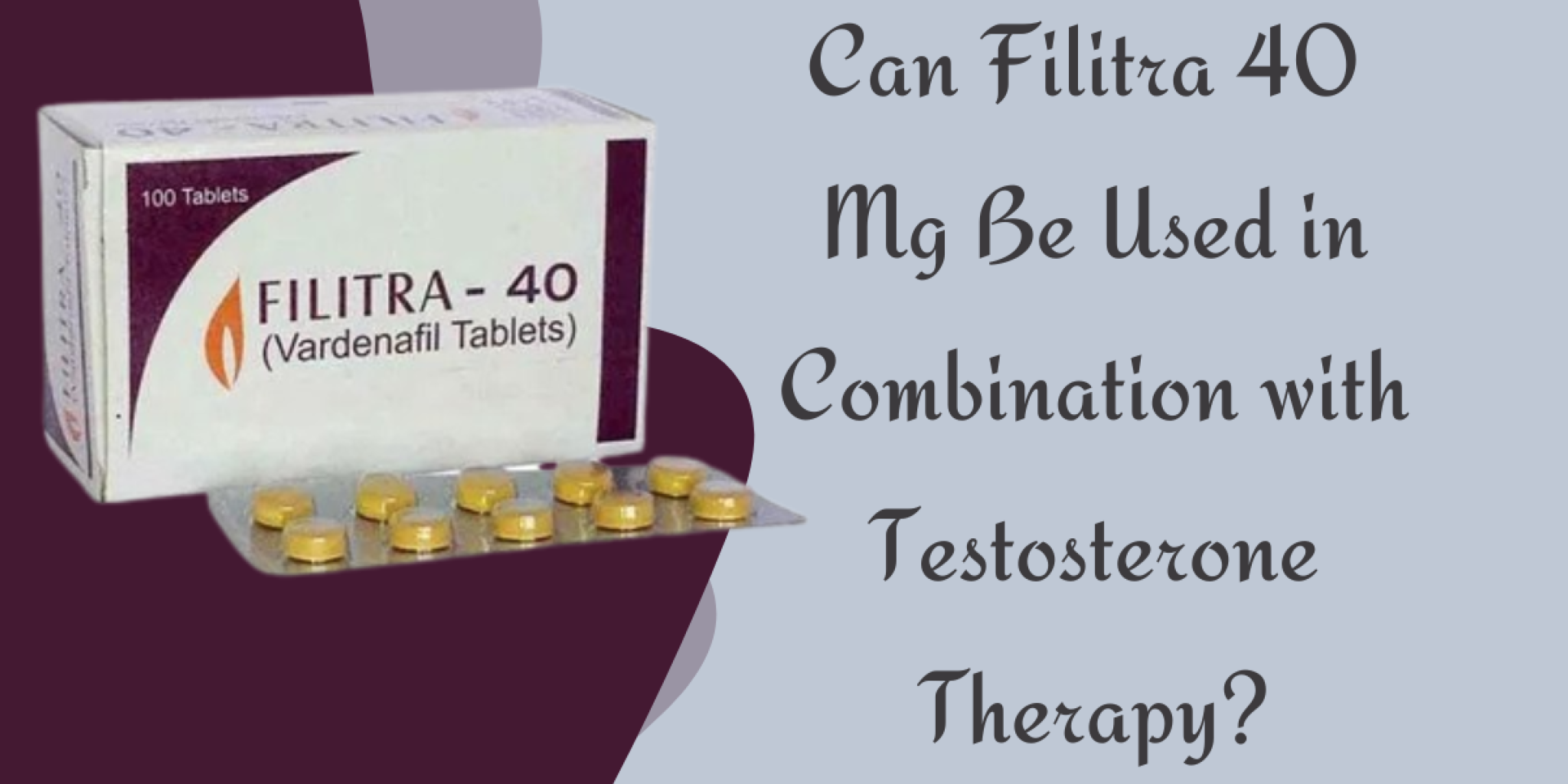Can Filitra 40 Mg Be Used in Combination with Testosterone Therapy?
 0
0
Posted: Wed June 25 10:31 PM PDT
Business: My Business Name
Tags: health

Erectile issues and low testosterone levels are common health concerns that often affect men as they age. Both conditions can impact sexual performance, libido, and overall quality of life. In recent years, combination therapies involving drugs like Filitra 40 mg (vardenafil) and testosterone replacement therapy have gained attention as potential ways to improve outcomes for men dealing with these issues. But is it safe and effective to use Filitra 40 alongside testosterone therapy? This article explores what you need to know about combining these treatments.
Understanding Filitra 40 mg
Filitra 40 mg is a medication whose active ingredient is vardenafil, a type of drug known as a phosphodiesterase type 5 (PDE5) inhibitor. It works by increasing blood flow to the penis, which helps achieve and maintain an erection when a man is sexually stimulated. Filitra is commonly prescribed for erectile dysfunction, a condition where a man has difficulty getting or keeping an erection firm enough for sexual intercourse.
The usual dose of Filitra ranges from 5 mg to 20 mg, but some patients may be prescribed 40 mg under medical supervision. It’s taken orally, typically 30 to 60 minutes before sexual activity, and its effects can last up to 4–5 hours. Filitra is favored for its quick onset and effectiveness, but like all medications, it comes with potential side effects such as headaches, flushing, nasal congestion, and dizziness.
Overview of Testosterone Therapy
Testosterone therapy involves supplementing the body’s natural testosterone hormone, which may be low due to aging, medical conditions, or hormonal imbalances. Testosterone is crucial not only for sexual function but also for muscle mass, bone density, mood, and energy levels.
This therapy can be administered via injections, gels, patches, or pellets implanted under the skin. Men diagnosed with hypogonadism (clinically low testosterone levels) often benefit from testosterone therapy. It can restore libido, improve mood, increase muscle strength, and sometimes improve erectile function, though it is not a direct treatment for ED.
Can Filitra 40 mg Be Combined With Testosterone Therapy?
Combining Filitra 40 mg with testosterone therapy is a topic of interest because both treatments address different aspects of sexual health. Testosterone therapy mainly works by boosting libido and correcting hormonal deficiencies, while Filitra facilitates the physical process of erection by enhancing blood flow.
Scientific Rationale
Testosterone plays a role in maintaining erectile function partly by supporting nitric oxide production, which is essential for the vasodilation needed to get an erection. Men with low testosterone may experience diminished sexual desire and sometimes have trouble with erections.
Filitra’s action as a PDE5 inhibitor helps maintain the chemical signals that allow blood vessels to relax and fill with blood during sexual arousal. When testosterone levels are low, PDE5 inhibitors may be less effective because the underlying hormonal stimulus is insufficient.
Thus, combining testosterone therapy with Filitra 40 mg can potentially offer a complementary approach: testosterone restores libido and hormonal balance, while Filitra ensures adequate blood flow for erections.
Medical Opinions and Studies
Clinical studies and medical experts generally support the idea that men with low testosterone and Impaired sexual function may benefit from a combination approach. For example, some studies have shown that men who do not respond to PDE5 inhibitors alone may see improved results after starting testosterone therapy.
However, the decision to combine these treatments should always be personalized and based on thorough medical evaluation. There isn’t a one-size-fits-all recommendation, and ongoing monitoring is essential.
Potential Benefits of Combination Therapy
- Improved Erectile Response: Testosterone therapy can restore sexual desire, while Filitra helps achieve erections, potentially improving overall sexual satisfaction.
- Better Libido: Testosterone replacement directly addresses hormonal deficiencies that affect desire.
- Enhanced Treatment Satisfaction: Men who have partial response to PDE5 inhibitors alone may find better outcomes with added testosterone therapy.
Possible Risks and Side Effects
As with any medication or therapy, there are risks involved in combining Filitra 40 mg with testosterone therapy.
- Overlapping Side Effects: Both can cause headaches, dizziness, and changes in blood pressure. Combining them could increase the likelihood or severity of these effects.
- Heart Risks: PDE5 inhibitors and testosterone can affect cardiovascular health. Men with heart disease, unstable angina, or those on nitrates should be cautious.
- Hormonal Imbalance: Testosterone therapy requires careful dosing to avoid side effects such as acne, sleep apnea, or increased red blood cell count.
Important Considerations Before Starting Combination Therapy
- Medical Evaluation: A thorough physical exam, blood tests (including testosterone levels), and cardiovascular assessment are crucial.
- Consult Healthcare Providers: Never self-medicate. Both treatments require prescriptions and monitoring by healthcare professionals.
- Personalized Treatment Plan: Dosages and timing should be tailored to individual needs and health status.
- Regular Monitoring: Follow-up visits to assess effectiveness, side effects, and hormone levels are important.
Conclusion
Using Filitra 40 mg in combination with testosterone therapy can be an effective strategy for men struggling with both Erection concerns and low testosterone. This combination targets different causes of sexual dysfunction and may improve both libido and erectile performance.
However, combining these treatments is not without risks and should always be done under the guidance of a healthcare professional. Proper evaluation, monitoring, and personalized dosing are essential to maximize benefits and minimize side effects.
If you are considering combination therapy, consult your doctor to determine the safest and most effective approach tailored to your needs.
Comments
Please login above to comment.
